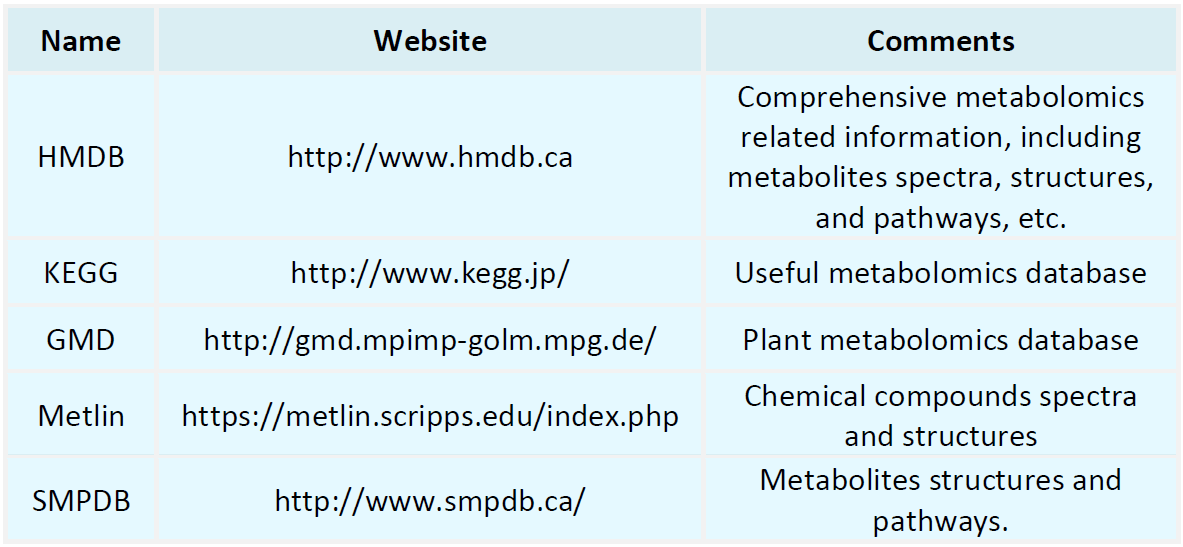Resources
Proteomics Databases

Metabolomics Databases

-
Protein profile refers to the analysis and measurement of the types, quantities, and variations of proteins within a biological system to comprehensively understand their functions and dynamic changes in different biological processes. The application of protein profiling is extensive. During disease onset and progression, the protein profile of biological samples undergoes characteristic changes. For example, in certain cancer patients, the expression levels of specific proteins in serum may increase......
-
• Can LC-MS Detect Enzymatic Glycosylation Modifications
Liquid chromatography-mass spectrometry (LC-MS) is a powerful tool for detecting enzymatic glycosylation modifications. Glycosylation, a prevalent post-translational modification (PTM) of proteins, is crucial in various biological processes such as cellular signaling, protein folding, and immune recognition. LC-MS is especially advantageous in glycosylation analysis because it provides comprehensive data on glycosylation sites, including the glycosylation type and glycan chain structure.
-
• Peptide Sequencing for Protein Analysis
Peptide sequencing is a biotechnological method used to elucidate the structural and functional relationships of proteins through analyzing the amino acid sequences in peptide chains. As peptides are fundamental constituents of proteins, understanding their sequences allows researchers to investigate their roles in biological functions more thoroughly. The peptide sequencing process typically involves several critical steps: sample preparation, enzymatic digestion, separation and detection, and data a......
-
• Glycan Mass Spectrometry Analysis
In biological sciences, mass spectrometry is widely employed for the qualitative and quantitative analysis of complex samples, such as proteins and nucleic acids. Glycan mass spectrometry refers to the application of mass spectrometry for the characterization of glycans. Glycans are biological macromolecules that are abundantly present in living organisms and play crucial roles in various biological processes, including cell recognition, signal transduction, and immune response.
-
• Number of Disulfide Bonds in a Protein
Disulfide bonds play a crucial role in protein structure by stabilizing the three-dimensional conformation, which is essential for proper protein function. These bonds are covalent linkages formed between the sulfur atoms of two cysteine residues. Therefore, to estimate the number of disulfide bonds in a protein, it is necessary to identify all cysteine residues and assess their potential pairings.
-
• Overview of Core Technologies for Protein Identification
Advancements in technology have transformed protein identification from basic qualitative analysis into a comprehensive system integrating multidisciplinary approaches. The primary objective is to characterize protein species, structures, and post-translational modifications (PTMs), facilitating research in life sciences, disease diagnostics, and drug development. The current technological framework for protein identification encompasses mass spectrometry, immunodetection, structural analysis techniqu......
-
ICAT mass spectrometry is a powerful proteomics technique for quantifying relative protein abundance. In biomedical research, ICAT enables precise protein quantification, offering valuable data for early disease diagnosis and treatment. In drug development, this method facilitates the rapid screening and identification of drug targets, enhancing the efficiency of novel therapeutics. Additionally, in environmental monitoring, ICAT mass spectrometry allows for the precise detection of trace compounds in......
-
Amino acid quantitation is a widely employed technique for analyzing and measuring amino acid content in various samples. As the fundamental building blocks of proteins, amino acids play essential roles in numerous metabolic pathways. Beyond their function as protein constituents, amino acids contribute to biomolecule synthesis, regulate biochemical reactions, and maintain osmotic balance in biological systems. Thus, precise quantitation of amino acid composition is critical for understanding physiolo......
-
• ESI-MS Protein Analysis in Proteomics and Biomedical Research
ESI-MS protein analysis employs electrospray ionization mass spectrometry (ESI-MS) to investigate protein composition, structure, and interactions. This technique plays a pivotal role in proteomics, providing precise molecular weight data and valuable insights into protein function. The core of ESI-MS protein analysis lies in the electrospray ionization process, which transforms protein molecules in liquid samples into gas-phase ions, enabling their detection by mass spectrometry. This approach allows......
-
• Amino Acid Analysis Using HPLC
Amino acid analysis using HPLC is widely employed for the qualitative and quantitative assessment of amino acids in protein hydrolysates and raw materials. High-Performance Liquid Chromatography (HPLC) is a well-established separation technique in biochemistry and analytical chemistry, enabling the resolution of complex mixtures by exploiting the interactions between the stationary and mobile phases within a chromatographic column. Amino acids, as fundamental building blocks of proteins, play crucia......
How to order?







